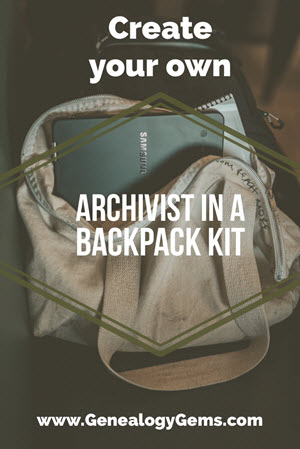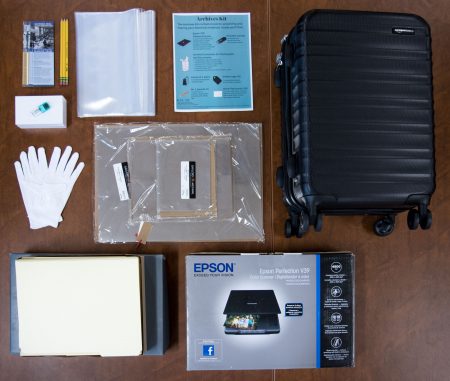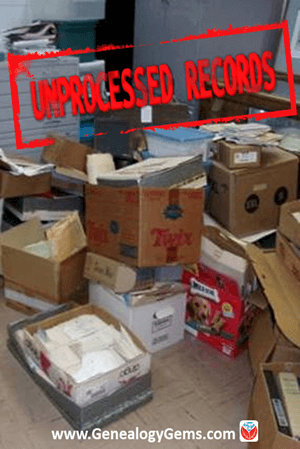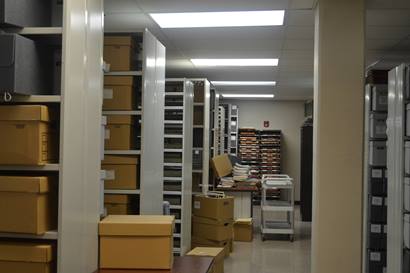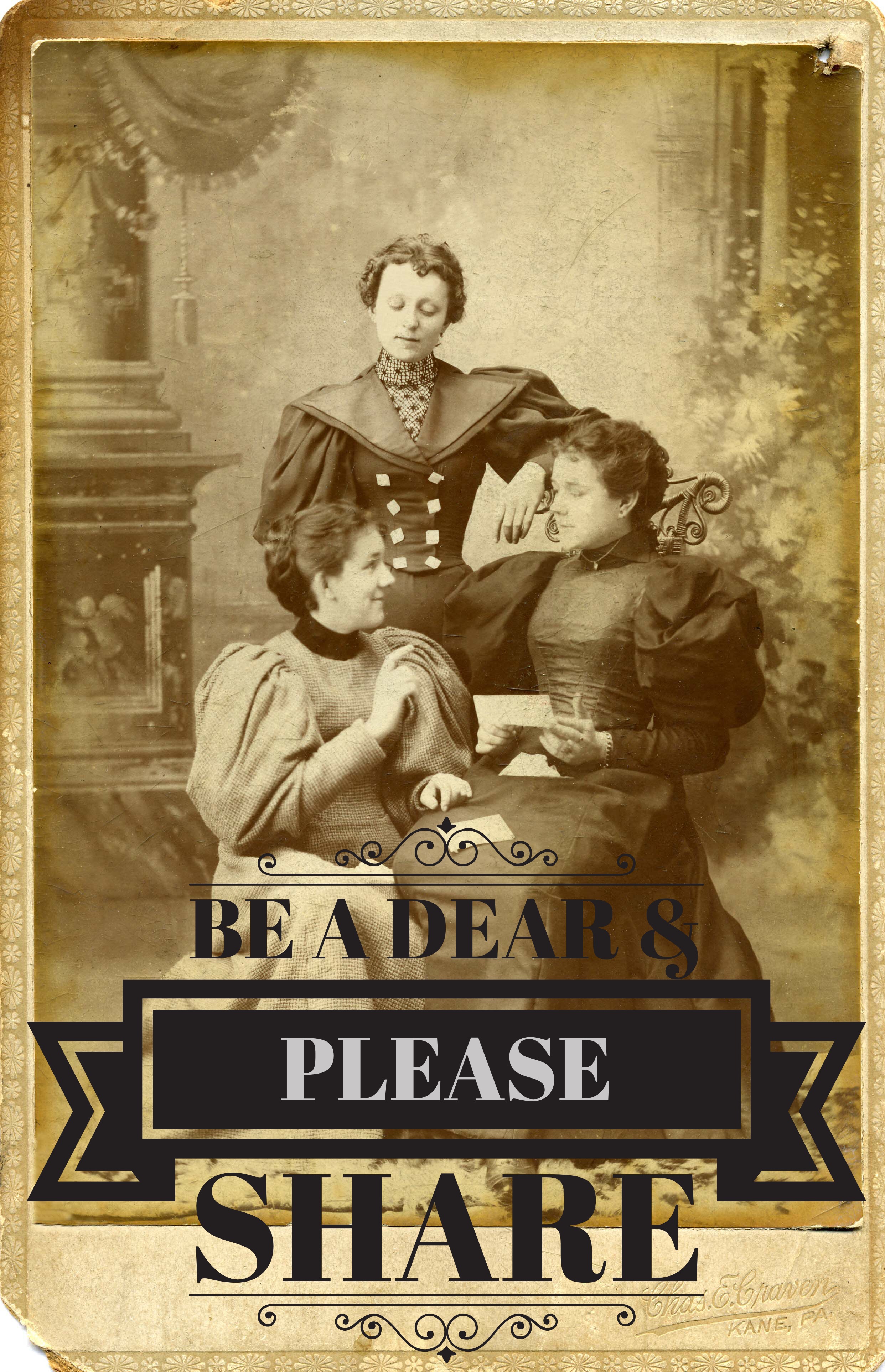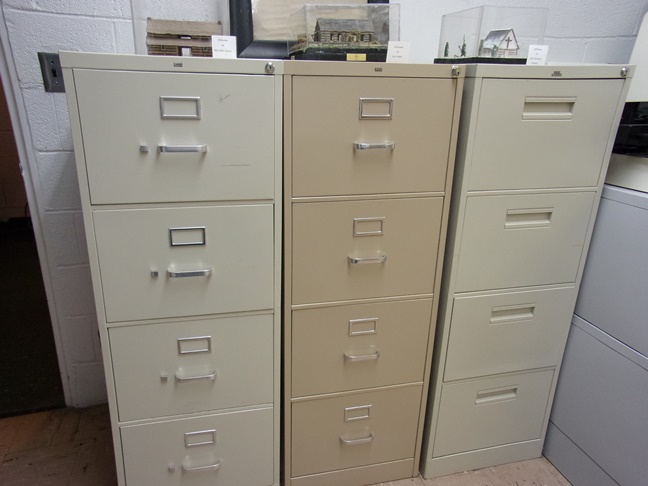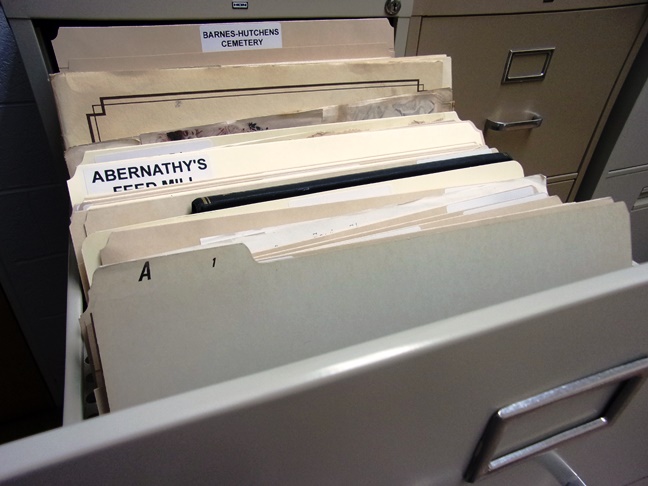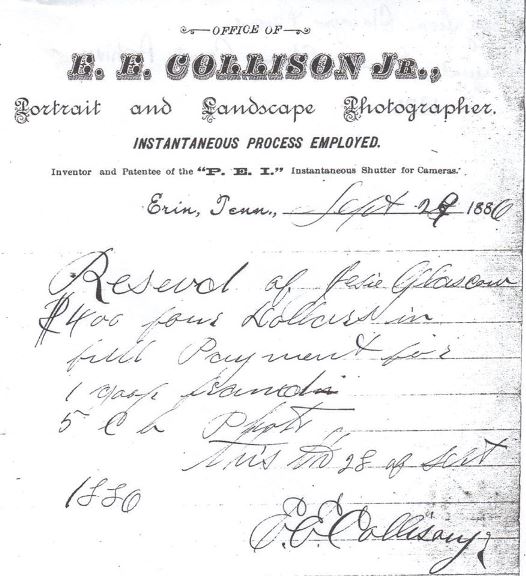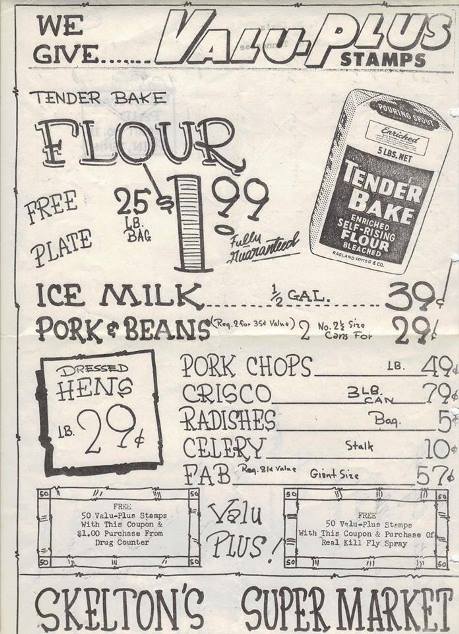“Archivist in a Backpack:” Create a Portable Archiving Kit
A new “Archivist in a Backpack” project to support community archiving offers genealogists a great idea: a portable archiving kit for on-the-go genealogy research and preservation projects. The Archive Lady Melissa Barker explains the initiative and offers her ideas for archiving supplies that you can stuff into your own backpack.
Archivist in a Backpack Project
A new prototype project from the Southern Historical Collection at the Wilson Special Collections Library aims to promote community-driven archiving efforts. The project, “Archivist in a Backpack,” is part of a three-year grant from the Andrew W. Mellon Foundation. Through this grant, the Southern Historical Collections will provide training, technical know-how, supplies and equipment to help local communities record and preserve their own history. Currently, the SHC is partnering with four community archiving projects: The Appalachian Student Health Coalition, Eastern Kentucky African American Migration Project, The Historic Black Towns & Settlements Association and the San Antonio African American Community Archive and Museum.
Using rolling suitcases that contain items to help community-based historians begin building a local archive, the archivists hope to teach archival skills to those who are building an archive in their community. Included in the archiving kits are items like portable scanners, gloves, archival sleeves, archival file folders, soft #2 pencils and instructions on how to use these items when working with historical and genealogical records.
Josephine McRobbie, community archivist at the Southern Historical Collection at the Wilson Special Collections Library, says in this press release, “When community members learn these skills and gain familiarity with common tools and equipment like acid-free folders to portable audio recorders, it is empowering and builds their sense of identity as historians and community archivists.” McRobbie and her colleagues want people to know that “telling the stories of their lives in their own community are well within reach and that the rewards can be tremendous. Simply making good records of what is gathered, and keeping everything in a cool, dry place, will go a long way toward preserving stories for future generations.”
The project is only in its first year and in the second and third year they are planning on refining the program. They will assess the work done to date and create new kits based on user feedback. They will also share their experience with additional community partners and with the archival profession. Keep an eye out for the “Archivist in a Backpack” project in your area!
Create your own portable archiving kit
You can create your own “archivist backpack” for whenever you have opportunities to preserve family history documents, photos, memorabilia and even memories. These opportunities can come up suddenly when visiting a relative’s house, attending a family reunion or stopping by a local historical or genealogical society. Here are some suggestions on what to include in your archiving-on-the-go kit:
- Soft archival gloves for handling fragile items without getting them dirty;
- Soft #2 Pencils for identifying photos and other items (Use on the backs, preferably along the edge, and if pencil markings won’t adhere to the photograph, you can use an Identi-Pen);
- A portable scanner to quickly scan photos or documents;
- Your favorite digital camera to snap pictures or record interviews (your smartphone may be just as good or better than a digital camera and easier to carry);
- A thumb drive with plenty of room on it to copy digital files between computers or devices;
- Your laptop, to organize files, type notes, etc. (make sure it holds its charge well, as sometimes you’re not able to plug in while you’re working).
More great tips for the mobile genealogist
Are you an on-the-go family history researcher? Let these articles inspire your next genealogy (or other) road trip!
Ultimate genealogy playlist for your summer road trip
How to upload your ebooks to your own Google Play Books library
Great local history apps for genealogists
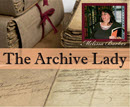
About the Author: Melissa Barker
The Archive Lady
Melissa is a Certified Archives Records Manager, the Houston County, Tennessee Archivist and author of the popular blog A Genealogist in the Archives and an advice columnist. She has been researching her own family history for the past 27 years.
Disclosure: As an Amazon Associate, Genealogy Gems earns from qualifying purchases you make when clicking from the links we provide. It doesn’t cost you anything extra but it helps support our free blog and podcast. Thank you for supporting Genealogy Gems!

